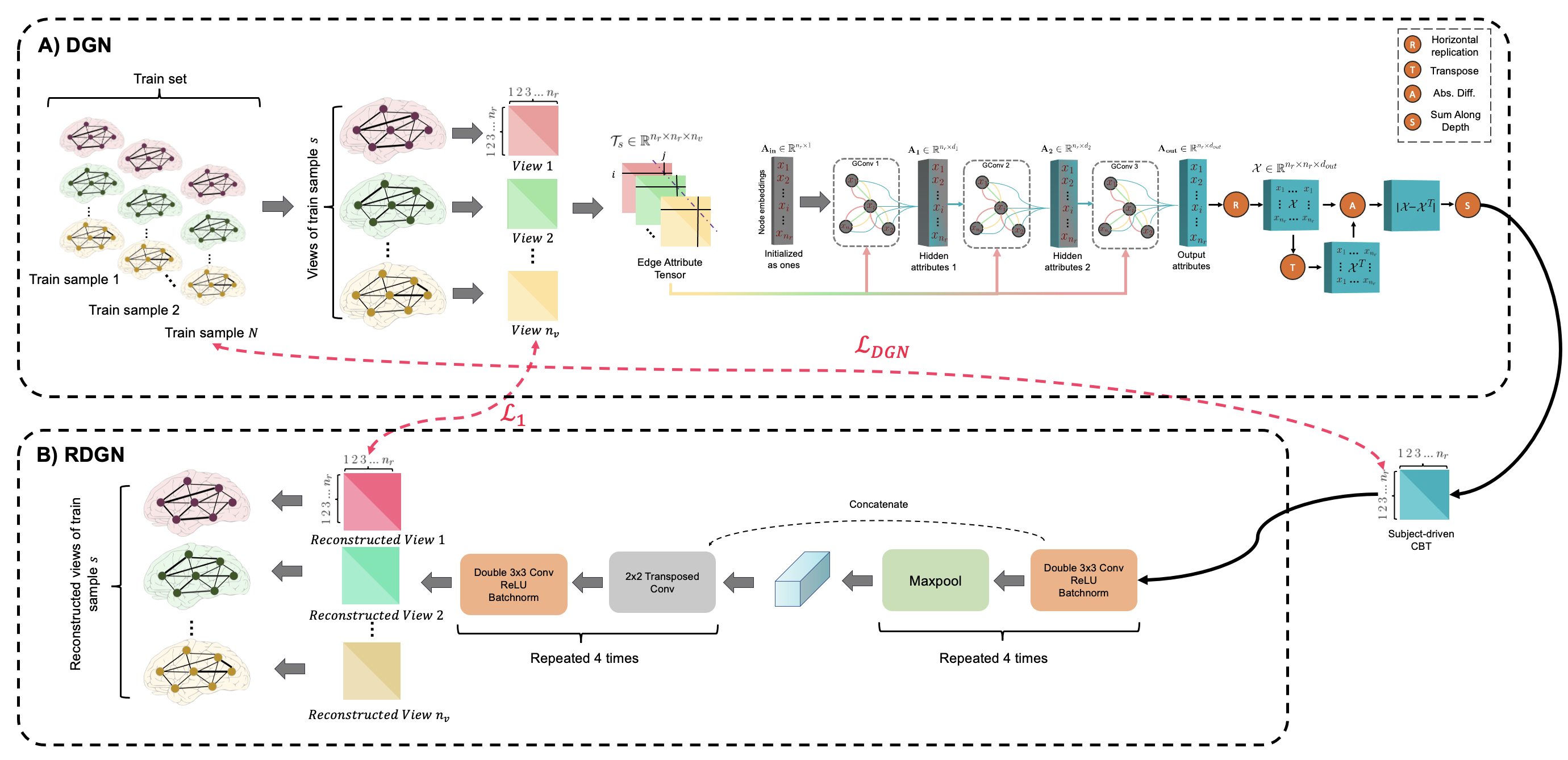Predicting Brain Multigraph Population From a Single Graph Template for Boosting One-Shot Classification
A central challenge in training one-shot learning models is the limited representativeness of the available shots of the data space. Particularly in the field of network neuroscience where the brain is represented as a graph, such models may lead to low performance when classifying brain states (e.g., typical vs. autistic). To cope with this, most of the existing works involve a data augmentation step to increase the size of the training set, its diversity and representativeness. Though effective, such augmentation methods are limited to generating samples with the same size as the input shots (e.g., generating brain connectivity matrices from a single shot matrix). To the best of our knowledge, the problem of generating brain multigraphs capturing multiple types of connectivity between pairs of nodes (i.e., anatomical regions) from a single brain graph remains unsolved. In this paper, we unprecedentedly propose a hybrid graph neural network (GNN) architecture, namely Multigraph Generator Network or briefly MultigraphGNet, comprising two subnetworks: (1) a many-to-one GNN which integrates an input population of brain multigraphs into a single template graph, namely a connectional brain temple (CBT), and (2) a reverse one-to-many U-Net network which takes the learned CBT in each training step and outputs the reconstructed input multigraph population. Both networks are trained in an end-to-end way using a cyclic loss. Experimental results demonstrate that our MultigraphGNet boosts the performance of an independent classifier when trained on the augmented brain multigraphs in comparison with training on a single CBT from each class. We hope that our framework can shed some light on the future research of multigraph augmentation from a single graph. Our MultigraphGNet source code is available at https://github.com/basiralab/MultigraphGNet.
PDF Abstract


